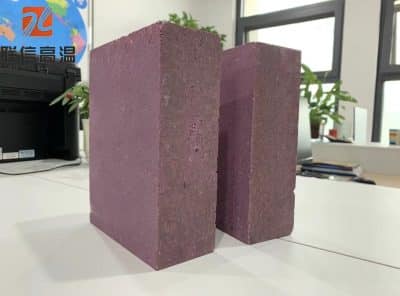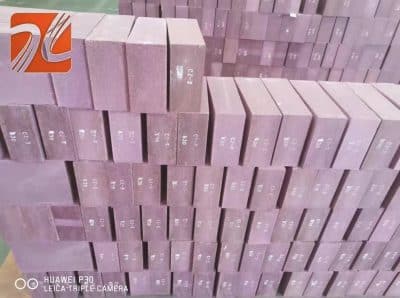Tri-resistance composite brick is a building material with heat insulation, fire resistance and impact resistance. It consists of two parts: the inner core and the outer shell. The inner core is usually made of low-strength materials, such as cement expanded perlite, while the outer shell is made of high-strength materials, such as cement mortar. It has a wide range of uses in the metallurgical industry, building materials, other industries and other fields.

Tri-resistance composite brick
Characteristics of tri-resistance composite bricks:
Thermal insulation performance:
The inner core material such as cement expanded perlite has good thermal insulation performance and can effectively reduce heat conduction.
In high-temperature environments, such as rotary kilns, the use of tri-resistance composite bricks can reduce heat loss and improve thermal efficiency.
Fire resistance:
It can withstand high temperatures without damage, which is particularly important for furnace protection in the metallurgical industry.
The high-strength material of the outer shell can resist the direct impact of flames and thermal radiation.
Impact resistance:
When subjected to physical impact, tri-resistance composite bricks can maintain the integrity of the structure and are not easy to break.
Suitable for use in harsh environments and frequent mechanical shocks.
Economic benefits:
By reducing heat loss and extending service life, tri-resistance composite bricks can reduce maintenance costs and energy consumption.
Under long-term use, it can bring significant economic benefits to the enterprise.
Application areas of three-resistance composite bricks:
Metallurgical industry:
Used for the lining of high-temperature furnaces such as rotary kilns and clinker kilns to provide thermal insulation and fire-resistant protection.
Used in equipment such as ladles and converters to resist high temperatures and chemical erosion.
Building materials:
Used for fireproof partition walls in buildings to improve the fire resistance level of buildings.
In high-rise buildings, as floor materials, it provides thermal insulation and sound insulation.
Other industries:
Used as refractory materials in boilers in the power industry.

In the chemical industry, it is used as the insulation layer of reactors and pipelines.
In summary, due to its unique properties, three-resistance composite bricks are widely used in environments that require thermal insulation, fire resistance and impact resistance. Its application not only improves the safety and efficiency of the process, but also brings economic benefits to enterprises by reducing energy consumption and maintenance costs. In the future, with the advancement of technology and the innovation of materials, the application scope of three-resistance composite bricks is expected to be further expanded to meet the needs of more industries.
